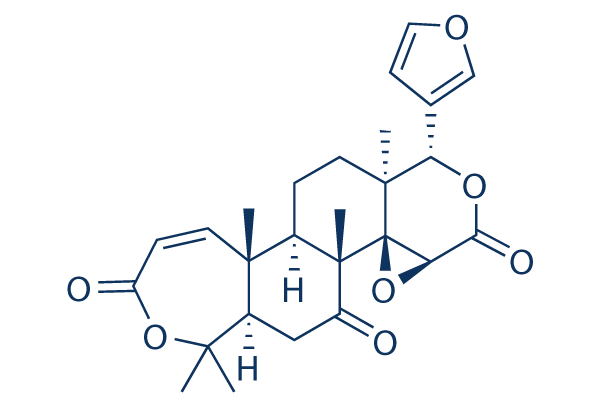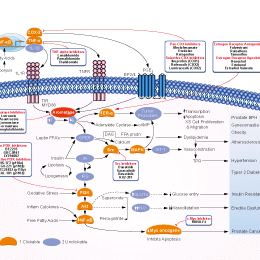
- Bioactive Compounds
- By Signaling Pathways
- PI3K/Akt/mTOR
- Epigenetics
- Methylation
- Immunology & Inflammation
- Protein Tyrosine Kinase
- Angiogenesis
- Apoptosis
- Autophagy
- ER stress & UPR
- JAK/STAT
- MAPK
- Cytoskeletal Signaling
- Cell Cycle
- TGF-beta/Smad
- DNA Damage/DNA Repair
- Compound Libraries
- Popular Compound Libraries
- Customize Library
- Clinical and FDA-approved Related
- Bioactive Compound Libraries
- Inhibitor Related
- Natural Product Related
- Metabolism Related
- Cell Death Related
- By Signaling Pathway
- By Disease
- Anti-infection and Antiviral Related
- Neuronal and Immunology Related
- Fragment and Covalent Related
- FDA-approved Drug Library
- FDA-approved & Passed Phase I Drug Library
- Preclinical/Clinical Compound Library
- Bioactive Compound Library-I
- Bioactive Compound Library-Ⅱ
- Kinase Inhibitor Library
- Express-Pick Library
- Natural Product Library
- Human Endogenous Metabolite Compound Library
- Alkaloid Compound LibraryNew
- Angiogenesis Related compound Library
- Anti-Aging Compound Library
- Anti-alzheimer Disease Compound Library
- Antibiotics compound Library
- Anti-cancer Compound Library
- Anti-cancer Compound Library-Ⅱ
- Anti-cancer Metabolism Compound Library
- Anti-Cardiovascular Disease Compound Library
- Anti-diabetic Compound Library
- Anti-infection Compound Library
- Antioxidant Compound Library
- Anti-parasitic Compound Library
- Antiviral Compound Library
- Apoptosis Compound Library
- Autophagy Compound Library
- Calcium Channel Blocker LibraryNew
- Cambridge Cancer Compound Library
- Carbohydrate Metabolism Compound LibraryNew
- Cell Cycle compound library
- CNS-Penetrant Compound Library
- Covalent Inhibitor Library
- Cytokine Inhibitor LibraryNew
- Cytoskeletal Signaling Pathway Compound Library
- DNA Damage/DNA Repair compound Library
- Drug-like Compound Library
- Endoplasmic Reticulum Stress Compound Library
- Epigenetics Compound Library
- Exosome Secretion Related Compound LibraryNew
- FDA-approved Anticancer Drug LibraryNew
- Ferroptosis Compound Library
- Flavonoid Compound Library
- Fragment Library
- Glutamine Metabolism Compound Library
- Glycolysis Compound Library
- GPCR Compound Library
- Gut Microbial Metabolite Library
- HIF-1 Signaling Pathway Compound Library
- Highly Selective Inhibitor Library
- Histone modification compound library
- HTS Library for Drug Discovery
- Human Hormone Related Compound LibraryNew
- Human Transcription Factor Compound LibraryNew
- Immunology/Inflammation Compound Library
- Inhibitor Library
- Ion Channel Ligand Library
- JAK/STAT compound library
- Lipid Metabolism Compound LibraryNew
- Macrocyclic Compound Library
- MAPK Inhibitor Library
- Medicine Food Homology Compound Library
- Metabolism Compound Library
- Methylation Compound Library
- Mouse Metabolite Compound LibraryNew
- Natural Organic Compound Library
- Neuronal Signaling Compound Library
- NF-κB Signaling Compound Library
- Nucleoside Analogue Library
- Obesity Compound Library
- Oxidative Stress Compound LibraryNew
- Plant Extract Library
- Phenotypic Screening Library
- PI3K/Akt Inhibitor Library
- Protease Inhibitor Library
- Protein-protein Interaction Inhibitor Library
- Pyroptosis Compound Library
- Small Molecule Immuno-Oncology Compound Library
- Mitochondria-Targeted Compound LibraryNew
- Stem Cell Differentiation Compound LibraryNew
- Stem Cell Signaling Compound Library
- Natural Phenol Compound LibraryNew
- Natural Terpenoid Compound LibraryNew
- TGF-beta/Smad compound library
- Traditional Chinese Medicine Library
- Tyrosine Kinase Inhibitor Library
- Ubiquitination Compound Library
-
Cherry Picking
You can personalize your library with chemicals from within Selleck's inventory. Build the right library for your research endeavors by choosing from compounds in all of our available libraries.
Please contact us at [email protected] to customize your library.
You could select:
- Antibodies
- Bioreagents
- qPCR
- 2x SYBR Green qPCR Master Mix
- 2x SYBR Green qPCR Master Mix(Low ROX)
- 2x SYBR Green qPCR Master Mix(High ROX)
- Protein Assay
- Protein A/G Magnetic Beads for IP
- Anti-Flag magnetic beads
- Anti-Flag Affinity Gel
- Anti-Myc magnetic beads
- Anti-HA magnetic beads
- Magnetic Separator
- Poly DYKDDDDK Tag Peptide lyophilized powder
- Protease Inhibitor Cocktail
- Protease Inhibitor Cocktail (EDTA-Free, 100X in DMSO)
- Phosphatase Inhibitor Cocktail (2 Tubes, 100X)
- Cell Biology
- Cell Counting Kit-8 (CCK-8)
- Animal Experiment
- Mouse Direct PCR Kit (For Genotyping)
- New Products
- Contact Us
Obacunone (AI3-37934)
Synonyms: CCRIS 8657
Obacunone (AI3-37934, CCRIS 8657), a natural compound present in citrus fruits, has been demonstrated for various biological activities including anti-cancer and anti-inflammatory properties. It significantly inhibits aromatase activity in an in vitro enzyme assay with an IC50 value of 28.04 μM; also a novel activator of Nrf2.

Obacunone (AI3-37934) Chemical Structure
CAS No. 751-03-1
Purity & Quality Control
Batch:
Purity:
99.85%
99.85
Obacunone (AI3-37934) Related Products
| Related Products | Fadrozole (CGS16949A) | Click to Expand |
|---|---|---|
| Related Compound Libraries | FDA-approved Drug Library Natural Product Library Bioactive Compound Library-I Exosome Secretion Related Compound Library Human Hormone Related Compound Library | Click to Expand |
Signaling Pathway
Biological Activity
| Description | Obacunone (AI3-37934, CCRIS 8657), a natural compound present in citrus fruits, has been demonstrated for various biological activities including anti-cancer and anti-inflammatory properties. It significantly inhibits aromatase activity in an in vitro enzyme assay with an IC50 value of 28.04 μM; also a novel activator of Nrf2. | ||||
|---|---|---|---|---|---|
| Targets |
|
| In vitro | ||||
| In vitro | Obacunone is strongly inhibited MCF-7 cell proliferation without affecting non-malignant breast cells. Treatment with obacunone increases apoptosis by upregulating expression of the pro-apoptotic protein Bax and down-regulating the anti-apoptotic protein Bcl2, as well as inducing G1 cell cycle arrest. In addition, obacunone significantly inhibits aromatase activity in an in vitro enzyme assay. Exposure of MCF-7 breast cancer cells to obacunone down-regulates expression of inflammatory molecules including nuclear factor-kappa B (NF-kB) and cyclooxygenase-2 (COX-2). Obacunone inhibits COX-2 and NF-kB by activation of the p38 mitogen-activated protein kinase (MAPK). Obacunone is reported as a glutathione S-transferase (GST) enzyme inducer as well as a neuroprotective agent acting by induction of heme oxygenase-1 via the p38 MAPK pathway[1]. Obacunone is a novel activator of Nrf2 by decreasing Nrf2 ubiquitination and increasing its stability. It can effectively protect cells from oxidative stress by activating the Nrf2 pathway. Obacunone could induce the expression of the ARE-dependent luciferase gene in a dose-dependent manner[2]. | |||
|---|---|---|---|---|
| Cell Research | Cell lines | Human breast cancer (MCF-7) and non-malignant immortalized breast epithelial (MCF-12F) cell lines | ||
| Concentrations | 12.5, 25, 50,100 and 200 μM | |||
| Incubation Time | 24, 48, and 72 h | |||
| Method | The MCF-7 cells are cultured in DMEM medium containing 10% (v/v) fetal bovine serum, 200 U/mL penicillin G, and 200 mg/mL streptomycin. The MCF-12F cells are cultured in a 1:1 mixture of DMEM and Ham's F12 medium with 20 ng/mL of epidermal growth factor (EGF),100 ng/mL cholera toxin, 0.01 mg/mL insulin, 500 ng/mL hydrocortisone, and 5% (v/v) chelextreated horse serum, and then the cells are incubated at 37℃ with 5% CO2. To evaluate the anti-proliferate effects of obacunone, viability of the MCF-7 and MCF-12F cells are measured using the tetrazolium MTT reduction assay. The MCF-7 or MCF-12F cells (1×104/well) are seeded into a 96-well plate and allowed to adhere overnight. Cells are treated with different concentrations (12.5, 25, 50,100 and 200 μM) of either obacunone or OG and incubated for 24, 48, and 72 h. Tamoxifen, a well-known anti-estrogen drug used for breast cancer therapy, is used as a positive control. After the various time points, 10 ml of the MTT (5 mg/mL) reagent are added to each well and incubated for 2h at 37℃. After 2h incubation, the medium is removed and 200 ml of DMSO is added to dissolve the purple formazan. The absorbance is measured by an ELISA microplate reader at 570 nm. | |||
| In Vivo | ||
| In vivo | The systemic administration of obacunone strongly inhibits bleomycin-induced lung fibrosis in mice. Obacunone can inhibit cancer proliferation and has some therapeutic effects on cardiovascular diseases[2]. In vitro and animal studies suggests that obacunone and a few other limonoids may have potential anticarcinogenic activity against certain types of cancers. A 500-mg/kg (of body weight) dose of obacunone per day is well tolerated and does not have adverse effects in rats, indicating a low toxicity[3]. | |
|---|---|---|
| Animal Research | Animal Models | Eight-week-old B6 mice |
| Dosages | 10 mg/kg | |
| Administration | i.p. | |
Chemical Information & Solubility
| Molecular Weight | 454.51 | Formula | C26H30O7 |
| CAS No. | 751-03-1 | SDF | Download Obacunone (AI3-37934) SDF |
| Smiles | CC1(C2CC(=O)C3(C(C2(C=CC(=O)O1)C)CCC4(C35C(O5)C(=O)OC4C6=COC=C6)C)C)C | ||
| Storage (From the date of receipt) | |||
|
In vitro |
DMSO : 90 mg/mL ( (198.01 mM) Moisture-absorbing DMSO reduces solubility. Please use fresh DMSO.) |
Molecular Weight Calculator |
|
In vivo Add solvents to the product individually and in order. |
In vivo Formulation Calculator |
||||
Preparing Stock Solutions
Molarity Calculator
In vivo Formulation Calculator (Clear solution)
Step 1: Enter information below (Recommended: An additional animal making an allowance for loss during the experiment)
mg/kg
g
μL
Step 2: Enter the in vivo formulation (This is only the calculator, not formulation. Please contact us first if there is no in vivo formulation at the solubility Section.)
% DMSO
%
% Tween 80
% ddH2O
%DMSO
%
Calculation results:
Working concentration: mg/ml;
Method for preparing DMSO master liquid: mg drug pre-dissolved in μL DMSO ( Master liquid concentration mg/mL, Please contact us first if the concentration exceeds the DMSO solubility of the batch of drug. )
Method for preparing in vivo formulation: Take μL DMSO master liquid, next addμL PEG300, mix and clarify, next addμL Tween 80, mix and clarify, next add μL ddH2O, mix and clarify.
Method for preparing in vivo formulation: Take μL DMSO master liquid, next add μL Corn oil, mix and clarify.
Note: 1. Please make sure the liquid is clear before adding the next solvent.
2. Be sure to add the solvent(s) in order. You must ensure that the solution obtained, in the previous addition, is a clear solution before proceeding to add the next solvent. Physical methods such
as vortex, ultrasound or hot water bath can be used to aid dissolving.
Tech Support
Answers to questions you may have can be found in the inhibitor handling instructions. Topics include how to prepare stock solutions, how to store inhibitors, and issues that need special attention for cell-based assays and animal experiments.
Tel: +1-832-582-8158 Ext:3
If you have any other enquiries, please leave a message.
* Indicates a Required Field
Tags: buy Obacunone (AI3-37934) | Obacunone (AI3-37934) supplier | purchase Obacunone (AI3-37934) | Obacunone (AI3-37934) cost | Obacunone (AI3-37934) manufacturer | order Obacunone (AI3-37934) | Obacunone (AI3-37934) distributor







































